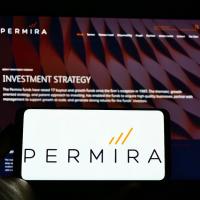San Francisco-based GI Partners’ approach can best be visualised as a martini glass when it comes to screening North American middle market companies for potential investment. Whilst the number of target acquisitions is substantial, by the time the team has done its necessary due diligence and deep prosecution, it soon shrinks.
“We are control-oriented,” says Philip Yau (pictured), Managing Director, who joined GI Partners this January and who, among other things, oversees the firm’s capital formation efforts. “The aim is to drive as much of the value-add playbook that we’re trying to achieve as possible. There are many different types of approaches that help us to arrive at a successful investment decision; for example, long-tail thesis investing based on deep insights where we proactively reach out to companies.”
GI Partners has raised over USD16 billion in capital through private equity and real estate strategies from recognised institutional investors across the world since it was established in 2001. The hallmarks of GI Partners’ private equity approach are advantaged sourcing, relentless focus on areas where it has resident knowledge, and tangible operational value addition.
Within the highly competitive North American private equity market, GI Partners looks to write equity cheques between USD100 to 400 million per transaction; however, that figure can be exceeded by bringing in co-investors, a trend that has gained significant momentum in recent years.
GI Partners is focused on four sectors: IT infrastructure, software, healthcare, and services. Each of these four sectors has a large opportunity set with meaningful tailwinds and growth potential. As a result, the sectors attract quite a bit of investment capital.
However, it is the firm’s lens within those four sectors that makes GI Partners distinctive. GI Partners focuses on companies that have significant downside protection and untapped growth potential.
“We view ourselves more as a style-oriented fund, one that always focuses on downside protected growth. The first question we always ask ourselves in the investment committee is: What is the downside protected growth of a company?” explains Yau.
Naturally, most PE groups will look for untapped growth potential. But where GI Partners tries to differentiate itself from its peers is by placing more emphasis on downside protection, such as recurring revenues and cash flows, underlying asset value, or a preferred position in the capital structure.
GI Partners defines untapped growth potential as situations where it can make transformative acquisitions to change the business, add new product lines or market geographies, augment the leadership team, or apply technology to drive scalability and margin expansion.
Referencing the importance that the firm places on downside protected growth, Yau confirms that this is evidenced in its track record. Since 2001, the firm has invested USD4.3 billion in 34 companies; over that time, it has had only one loss involving a minimal amount.
This year, GI Partners has announced the sale or partial sale of four portfolio companies. One of the full exits was the sale of its Waypoint Portfolio to Colony Starwood Homes (NYSE:SFR) for USD815 million. It also sold a portion of its stake in MRI Software, a real estate software solutions provider.
In terms of putting dry powder to work, this has been the firm’s most active year of its history.
In August, GI Partners completed its largest investment ever, a USD1.675 billion acquisition of IT infrastructure solutions provider ViaWest from Shaw Communications (NYSE:SJR), which it combined with one of its existing portfolio companies, Peak 10.
GI Partners has a successful history of investing in the IT infrastructure sector, which includes data centres. Since 2001, it has invested in seven businesses in this sector, including Digital Realty Trust (NYSE:DLR), The Telx Group, and SoftLayer Technologies.
Many investors will recognise that with Digital Realty Trust, GI Partners created one of the largest players in the IT infrastructure space. In its first fund, GI Partners deployed almost half the fund’s AUM into this business. It was a highly concentrated bet and one that worked extremely well.
Today, Digital Realty is a USD35 billion company.
GI Partners likes to go about its business and deliver excellence for its investors, constantly assessing how to optimise the risk and return profile of each portfolio investment it makes. In short, there are no histrionics. GI Partners gets the job done without fuss or fanfare.
GI Partners’ results-driven culture is most evident when one considers that its latest vintage, GI Partners Fund V, closed last month at the cap of USD2.7 billion of LP commitments, exceeding the fund’s original target of USD2.3 billion. You could have been forgiven for overlooking this significant news as there was no shouting from the rooftops.
In addition to identifying the prerequisite downside protected growth, GI Partners will only pursue a transaction if the team can see a path to a 2.5X-3X return and develop an angle for GI Partners, such as a unique insight into the business, a platform company, conviction behind a significant value creation plan, or relationships with management.
How, as a PE investor, does one get around over-paying for highly valued companies?
“We have to work extra hard to develop trust and familiarity with management teams. It’s all about building relationships with the right management teams and doing it in a way that’s constructive. What that means is we have our 100-day plan and our plan for the entire hold period all worked out. If the target management team has comfort with our approach to operational value creation, they can be a positive factor in the process,” says Yau.
The aim with every investment is to execute the deal flawlessly. In reality, things are never perfect. Hence why GI Partners places so much emphasis on downside protected growth; something that no doubt resonates with investors at this time when equity valuations are so high.






